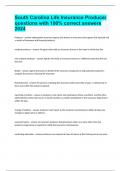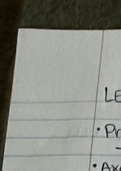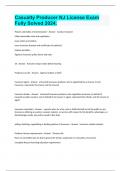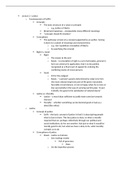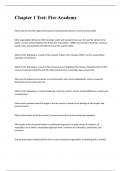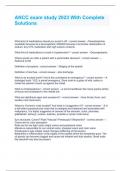AM-468020
Noteson Environmental Economics
Lectures (EE)
Mark Koetse
Contents
Lecture I Fundamentals............................................................................................................................................................. 1
Lecture II Policy instruments (I) ........................................................................................................................................... 3
Policy instruments (II) Consulting hour 1 30-Oct-2020 ......................................................................................... 5
Guest lecture : noise externalities ......................................................................................................................................... 5
Lecture III Policy instruments (II) ........................................................................................................................................ 6
Guest lecture: Beyond GDP as a measure of welfare .................................................................................................... 9
Lecture IV Climate change economics............................................................................................................................... 10
Lecture V EU ETS (fujin Zhou) .............................................................................................................................................. 13
Guest lectue netherlands environment assessment agency (Corjan brnk) on EU ETS............................ 16
Interactive events : trading schemes ................................................................................................................................. 19
Q&A 3 .............................................................................................................................................................................................. 20
Lecture VI Common Pool resource problems ................................................................................................................ 20
Lecture VII Trade & environment I .................................................................................................................................... 23
Guest lecture – Dutch central bank (DNB) ...................................................................................................................... 25
Lecture VIII Trade & environment II - Hypotheses & empirics ............................................................................ 25
Lecture IX Water markets ...................................................................................................................................................... 27
Lecture X Experimental economics .................................................................................................................................... 28
LECTURE I FUNDAMENTALS
Utility = benefit of satisfaction you get out of a service.
Marginal utility = benefit from the next incremental unit.
Marginal benefit = same as marginal utility. However, originally utility is measured in an absolute
measure. In terms of benefit, it is often used in terms of dollars.
The utility lecture introduces a more arbitrary unit for utility.
Two marginal utility (MU) functions show the relative utility towards each other, but it does not say
anything about which one would like to buy. Therefore, he introduced the MU/$. Both slope down.
Total utility (TU) is the sum of the MU. This will result in a negative parabola.
PART 1
Two economic approaches:
1. Positivistic economics (what is, what was and what will be);
2. Normative economics (deals what ought to be).
Economists evaluate the desirability in terms of costs and benefits, which are measured from a
anthropocentric perspective.
Total benefits = sum of all benefits from carrying out an activity.
Marginal benefit = the increase in total benefit that results from carrying out one additional unit of an
activity (often measured as the maximum willingness to pay by consumers).
Total costs = sum of all costs from carrying out an activity.
Page | 1
,Environmental Economics Lectures (EE) AM-468020
Marginal costs = the increase in total cost that results from carrying out one additional unit of an
activity (often measured as financial or opportunity costs).
Adam Smith 1776, the Invisible Hand of the Market: maximization of individual welfare
contributes to maximization of social welfare. Consequentl0079
• The sum of consumer and producer surplus is maximal (maximalization of welfare);
• Marginal costs of production are equal to marginal benefits (no more, no less);
• Private costs and benefits equal social costs and benefits (externalities are absent).
Consumer surplus, benefit = willingness to pay (WTP) – price
Producer surplus, profit = price – costs
The slope of a curve expresses the elasticity (% change in response to a 1% change in the price). The
higher the elasticity of supply, the flatter the supply curve.
PART 2
𝑀𝐶 = 𝑓 ′ (𝑇𝐶) ∧ 𝑀𝐵 = 𝑓′(𝑇𝐵)
Optimal quantity: 𝑓 ′ (𝑇𝐶) − 𝑓 ′ (𝑇𝐵) = 0
Net total benefits = TB-TC
MB>MC produce more; MC>MB produce less
Externality
• An externality is the unintended effect of a decision of actor A on actor B, without actor B being
involved or fully represented in the decision.
• Externalities refer to unintended effects: pestering and charity do not generate externalities,
these are intended actions!
𝑀𝐶𝑠𝑜𝑐𝑖𝑎𝑙 = 𝑀𝐶𝑝𝑟𝑖𝑣𝑎𝑡𝑒 + 𝑀𝐶𝑒𝑥𝑡𝑒𝑟𝑛𝑎𝑙
Whenever there are negative externalities: 𝑄𝑚 > 𝑄𝑠 and 𝑃𝑚 < 𝑃𝑠
𝑄
There is a benefit for the consumer of too much production: = ∫𝑄 𝑚 𝐷 − (𝑄𝑚 − 𝑄𝑠) ∗ 𝐷(𝑄𝑠)
𝑠
𝑄
Cost to producer of too much production: 𝑀𝑃𝐶(𝑄) = ∫𝑄 𝑚 𝑀𝑃𝐶
𝑠
𝑄 𝑄
Cost to environment of too much production: 𝐸𝑛𝑣𝑖𝑟𝑜𝑛𝑚𝑒𝑛𝑡𝑎𝑙 𝑐𝑜𝑠𝑡𝑠 = ∫𝑄 𝑚 𝑀𝑆𝐶 − ∫𝑄 𝑚 𝑀𝑃𝐶
𝑠 𝑠
𝑄
Total cost of too much production = ∫𝑄 𝑚 𝑀𝑆𝐶
𝑠
𝑄 𝑄
Net cost of externality (dead weight loss) = ∫𝑄 𝑚 𝑀𝑆𝐶 − ∫𝑄 𝑚 𝑀𝑆𝐵
𝑠 𝑠
Public good is a good that is characterised by non-rivalry and non-excludability
• Non-rivalry means that consumption of the good by one individual does not reduce availability of
the good for consumption by others (Note that in the textbook, this is referred to as "indivisible
consumption");
• Non-excludability means that no one can be excluded from using the good.
Types of goods:
• Club-goods (problem: natural monopolies)
• Public-goods (problem: underprovision)
• Private goods
• Common goods (problem: overextraction)
An efficient property rights structure is one with:
1. Exclusivity: owner bears all costs and benefits, unless sale to other occurs;
2. Transferability: rights are fully transferable on voluntary basis;
3. Enforceability: rights are secure (no involuntary seizure by others).
These are incomplete for public and common goods! This causes welfare loss and overextraction.
Page | 2
, Environmental Economics Lectures (EE) AM-468020
Transaction costs = full costs of an exchange / participate in market, including costs of information.
LECTURE II POLICY INSTRUMENTS (I)
PART 1
Important (economic) selection criteria:
• Effectiveness; • Enforceability;
• Efficiency/cost-effectiveness; • Polluter pays;
• Equity/fairness; • Indirect effects;
• Cost recovery; • Feasibility;
• Administrative complexity; • Acceptability.
Command and control instruments = regulations focus on preventing environmental problems by
specifying how a company or sector will manage a pollution (externality)-generating process
imposing detailed regulation:
• Emission standards;
• Production/technology;
• Product standards
• Bans & regulations;
• Quota, caps and permits.
Command and control inefficiency: burden sharing might differ between companies. Efficient
mitigation level is where the two functions intersect. C&C is inefficient because
• Mitigation costs may vary across firms;
• No incentives to reduce emissions below standard.
C&C is desirable when:
• Firms have similar MMC functions;
• There are emergencies or the optimal level of pollution is at or near zero.
PART 2
Pigouvian taxes (optimal environmental taxes) = when tax is equal to the marginal external costs in
the social welfare optimum.
Page | 3


